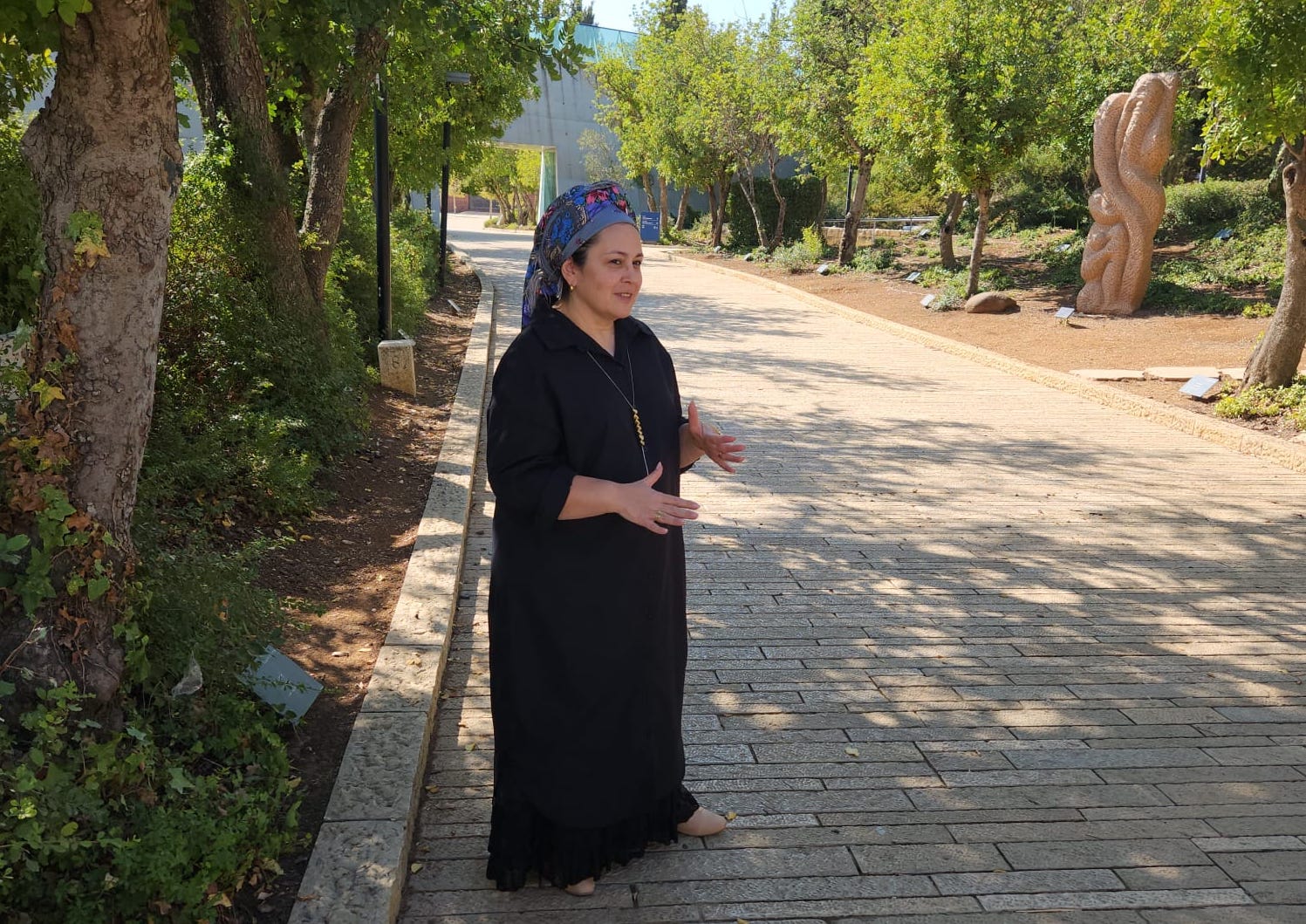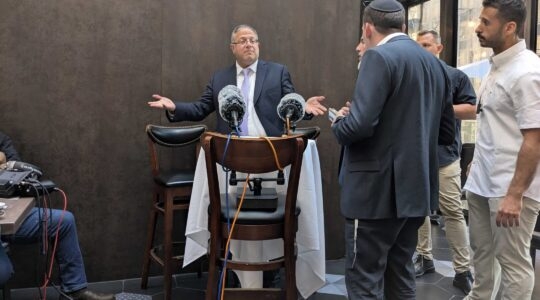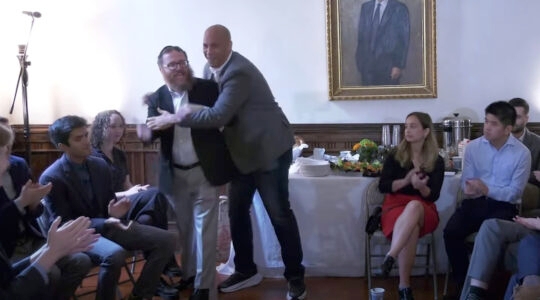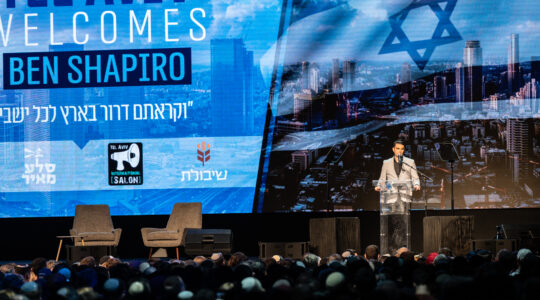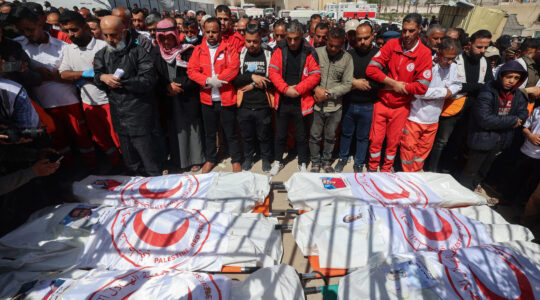(JTA) — On the day Israel was attacked, one of Hannah Asnafi’s first-graders from the southern Israeli community of Kfar Maimon hid for hours in a cramped attic.
Now, seven weeks later, the child has joined Asnafi and the rest of his class in a makeshift school housed at Israel’s Holocaust museum, which has opened its doors to evacuees from the south as part of a widespread repurposing of available space across central Israel.
The symbolism of educating children whose experiences echo famous stories from the Holocaust isn’t lost on anyone involved in the enterprise.
“We’re all inspired about what we teach and learn about the Holocaust, about how people were there for one another, about how educators in the Holocaust taught,” said Shani Lourie-Farhi, who heads the International School for Holocaust Studies at Yad Vashem and is serving as the acting principal of the newly established school, called B’shvilei Hachinuch.
“I don’t think we’ve ever had a discussion about it but it’s an unspoken inspiration,” Lourie-Farhi said. Using the Hebrew word for mission, she added, “We’re very connected to our past and there’s something there that brought us into this shlichut.”
The impromptu school at Yad Vashem is part of a sweeping effort to make sure that the children among the estimated 300,000 people evacuated from Israel’s southern and northern communities can continue learning while their home schools are closed. Students are not obligated to attend school right now, and the national high school exam has been postponed. Even in areas that were not hit hard on Oct. 7, schools remain shuttered or limited in their operations, particularly, if they do not have adequate bomb shelters for their students. But families and educators know that getting back to school is a key element of providing stability for children at a time when it is gravely needed.
To fill the gaps, individuals, nonprofits and local organizations have turned fallow space into classrooms, gathered school supplies, collected donations to pay educators and even volunteered to teach themselves. The newly reopened National Library of Israel, for example, is using some of its seminar rooms to host evacuated students, while educators have held lessons for students living in Dead Sea hotels at Masada, the site of a first-century resistance by Jewish patriots.
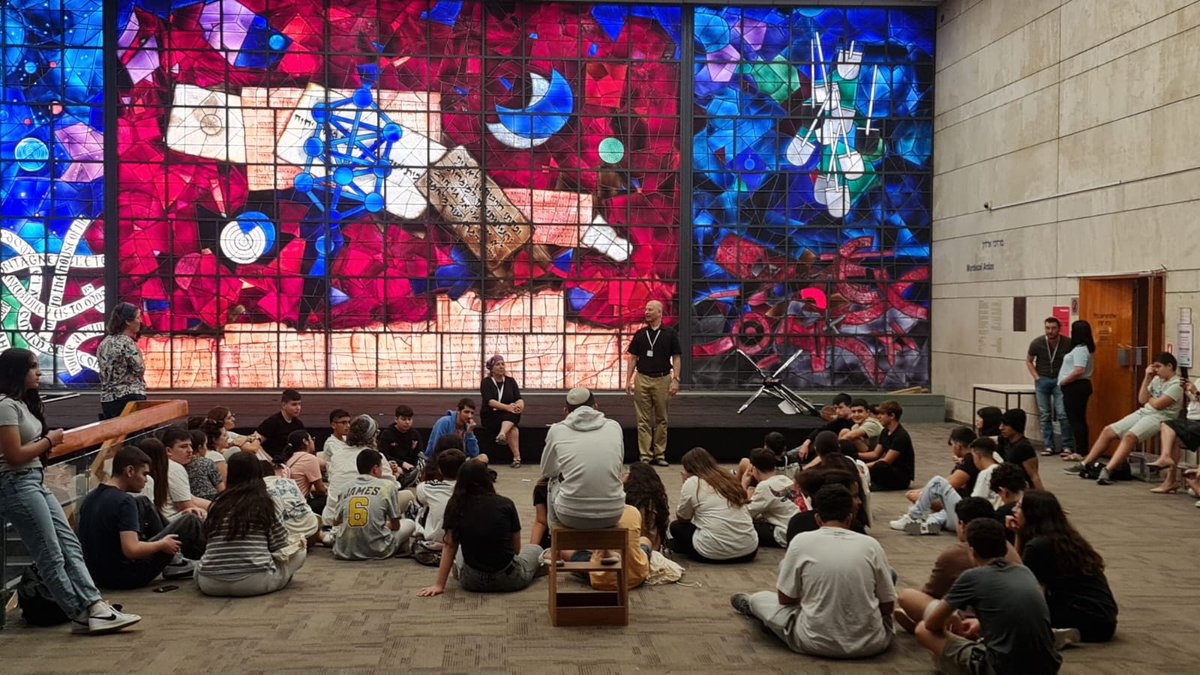
Children at the new Kedem school for Oct. 7 evacuees sit in a classroom at the recently opened National Library of Israel, November 2023. (National Library/X)
Asnafi was off work for three weeks after the Oct. 7 massacre but returned once Yad Vashem made the decision to convert its unused space into a regular school for some 400 children, ranging from grades 1 through 12, who were evacuated from Kfar Maimon and three other southern border communities to Jerusalem and the surrounding areas.
Yad Vashem chairman Dani Dayan said in a statement that he felt it was the Holocaust memorial’s “duty to extend a helping hand and do what we can to support those affected.” The museum’s public display remains open.
The metamorphosis didn’t come without snags. Despite its name, the International School for Holocaust Studies is more of a teacher training institute than a school and its 25 classrooms are more suited to seminars than activities for children.
“The educational space is actually geared towards adults,” Asnafi said, adding that the Yad Vashem staff were making “tremendous” efforts to adapt it in the maximal way possible.
To that end, the first things to go were Holocaust posters and memorabilia — a move that aimed at turning the building into a “safe zone,” Lourie-Farhi said.
“Bringing first- and second-graders, and even high school kids, into a place like this when they went through such a traumatic event [led to] the choice to say that while of course our role is to commemorate the Holocaust, we’re excluding the Holocaust in this building for this period,” Lourie-Farhi told JTA.
When the school initially opened, many of the children struggled with separating from their parents as the school bus departed each morning from the hotels where evacuees have been staying. While Kfar Maimon was not directly infiltrated by Hamas, the majority of children were traumatized from the ordeal of hiding upwards of 12 hours and then having to escape in a hurry, especially with the presence of terrorists in the vicinity in the days following the attack. Asnafi said she and her children and grandchildren were in her safe room for hours, with one son training his gun on the door.
Lourie-Farhi said she believed the new school could help the children recover. “We want to make the school part of their process of building resilience and finding some sort of routine.”
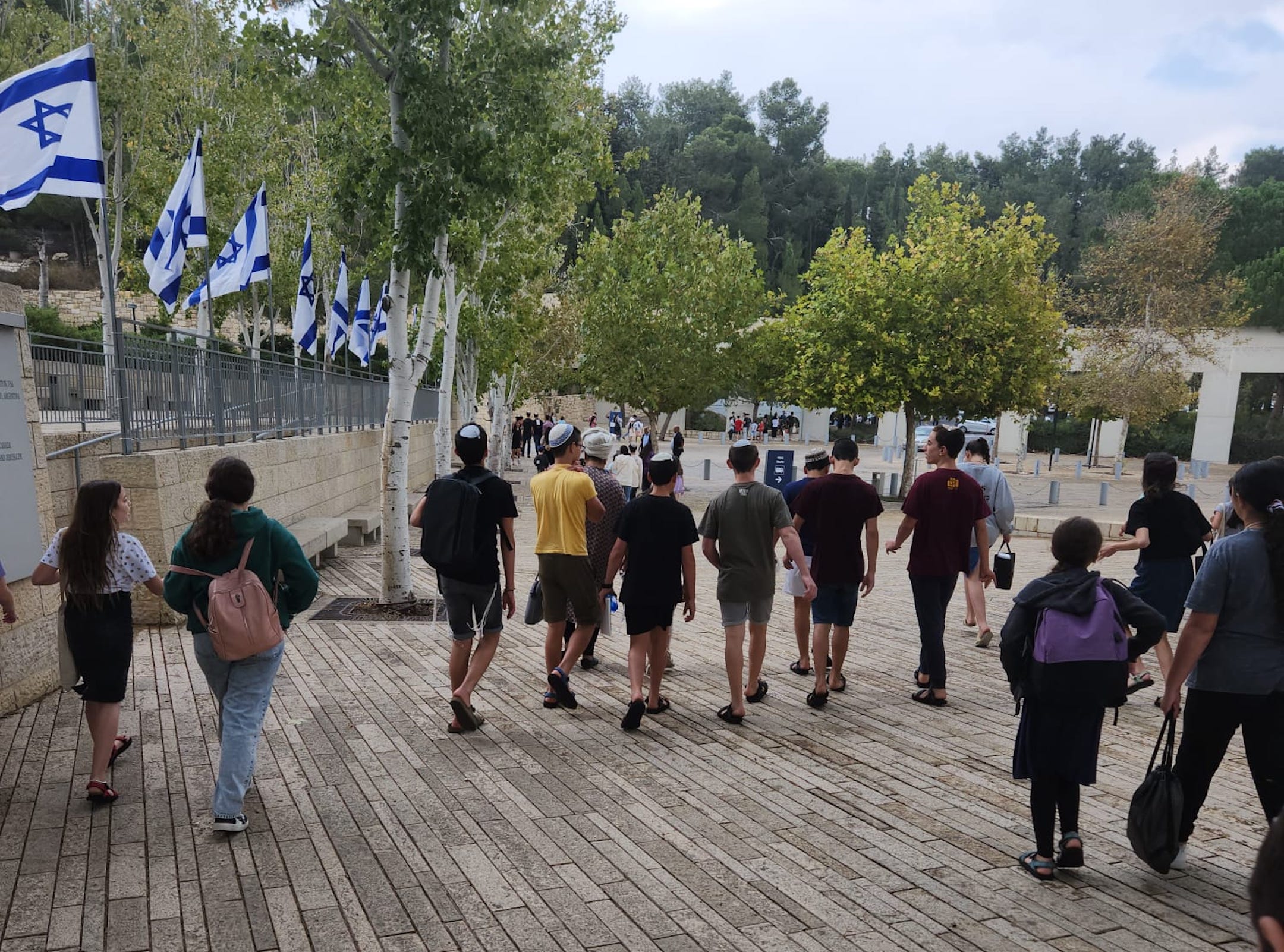
Children attending B’shvilei Hachinuch, a school established at Yad Vashem. walk on the campus of the Holocaust memorial and museum. (Courtesy Yad Vashem)
But staffing has been a challenge. While some teachers, like Asnafi, have continued in their roles as usual, many were unable to for a range of reasons. Some were too traumatized to teach; others relocated elsewhere within Israel and could not get to the school; others yet had spouses called into military service, making it impossible for them to work.
Some 50 Yad Vashem staff members volunteered to fill in the gaps.
“Suddenly you’ve gone from being [a Holocaust studies] educator to a second-grade teacher,” Farhi said. Her staff members took on the onus of adapting into their new roles themselves, including reaching out to other educators to learn the curriculum and how to teach it.
“They’re all very invested. Everybody’s heart is in this project,” she said. “We’re a link in the chain. Some time when this is over — and it will be over — at least this aspect will not be broken.”
Lourie-Farhi said she was also inundated by calls and messages from people wanting to help, including retired teachers or those on sabbatical, some of whom came on board.
In another case cited by Asnafi, the Holocaust memorial’s bookkeeper became the person who greets the children every day on their arrival. “If she doesn’t come to the bus, the kids cry,” she said.
The warmth and dedication of everyone at Yad Vashem went some ways in mitigating some of the challenges, Asnafi said. She did, however, issue sharp criticism of the Israeli’s education ministry, which she said had not adequately supported the schools or their students as they reestablished themselves in new locations.
Anati Manshury, a spokesperson for the ministry, said the government had allocated millions of shekels to setting up new schools for students who were displaced across hundreds of locations. The ministry has hired new teachers, added psychologists, delivered thousands of computers to families and authorized the construction of new buildings in a handful of locations, she said.
For B’shvilei Hachinuch, the challenges are ongoing and speak to the ongoing nature of Israel’s current crisis. The student body comes from existing schools and a yeshiva high school from four religious communities from the Eshkol Regional Council, but new children from other evacuated areas are joining every day, including from the north.
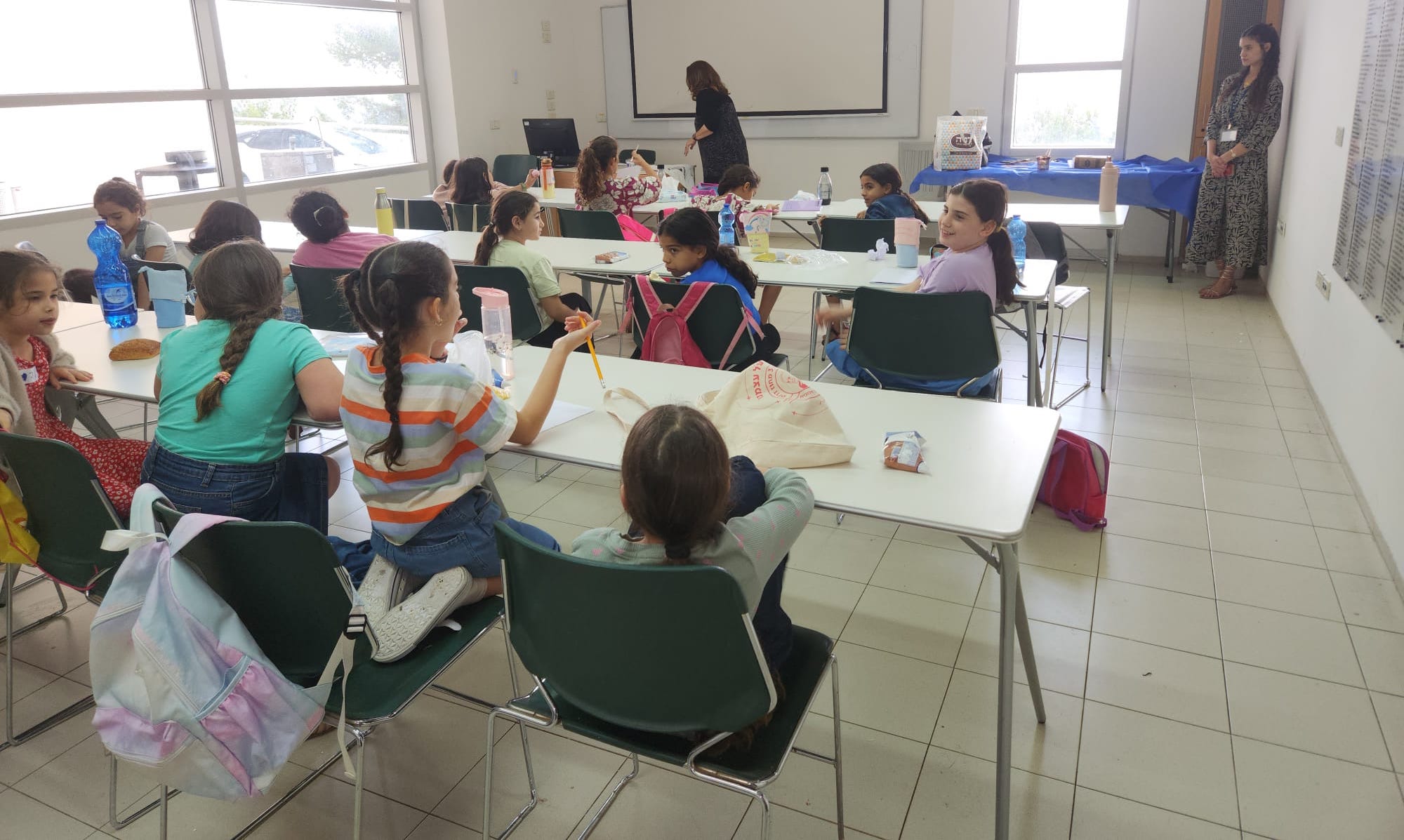
Young children sit in a classroom converted from seminar space at Yad Vashem, which has created a school to education children evacuated from Israeli communities attacked on Oct. 7. (Courtesy Yad Vashem)
“We have to integrate new kids all the time and it can be disruptive,” Asnafi said. “Not only do they not know their peers, but they’re from completely different backgrounds.”
Asnafi gave an example of a boy who had joined her class from the northern border town of Kiryat Shmona. He sat crying silently and it was a while before Asnafi was able to decipher that the boy, who hails from a secular family, was upset that he was one of only a few boys without a kippah.
“When I came the next day with a kippah my daughter knitted for him, he was overjoyed,” she said.
With exams delayed and so much in turmoil, some in Israel say they would be satisfied with a school year in which children simply feel safe and supported. But while Lourie-Farhi recognized the significance of warmth and support from ancillary staff, such as counselors and psychologists, in creating a secure environment, she stressed the necessity to “emphasize that this is still a school.”
“It’s about being serious, there’s math, there’s English, we’re going to learn,” she said, adding that she saw her new role as a part of the country’s war effort.
“So many people have been recruited, everywhere you go there are people wearing uniforms,” Lourie-Farhi said. “This is our call to duty. This is what we know how to do. We know how to teach.”
JTA has documented Jewish history in real-time for over a century. Keep our journalism strong by joining us in supporting independent, award-winning reporting.
